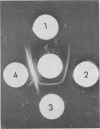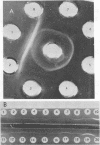Abstract
Group-specific and type-specific antigens have been identified and purified from sonic extracts of Capnocytophaga. The group-specific antigen, which was purified by affinity chromatography, was found to be identical to an antigen present in all 26 strains tested. The antigen is sensitive to trypsin, sodium dodecyl sulfate and heat labile, and composed predominantly (55%) of protein. The type-specific antigen, which was obtained by preparative immunoelectrophoresis, was found to be present in only 3 of the 26 strains tested. This antigen was resistant to heat, trypsin, and sodium dodecyl sulfate and was primarily composed of carbohydrate (47% phenol-sulfuric acid-positive material, 8% amino sugar). Agglutination and fluorescent antibody data suggest that both the group- and type-specific antigens reside on the cell surface.
Full text
PDF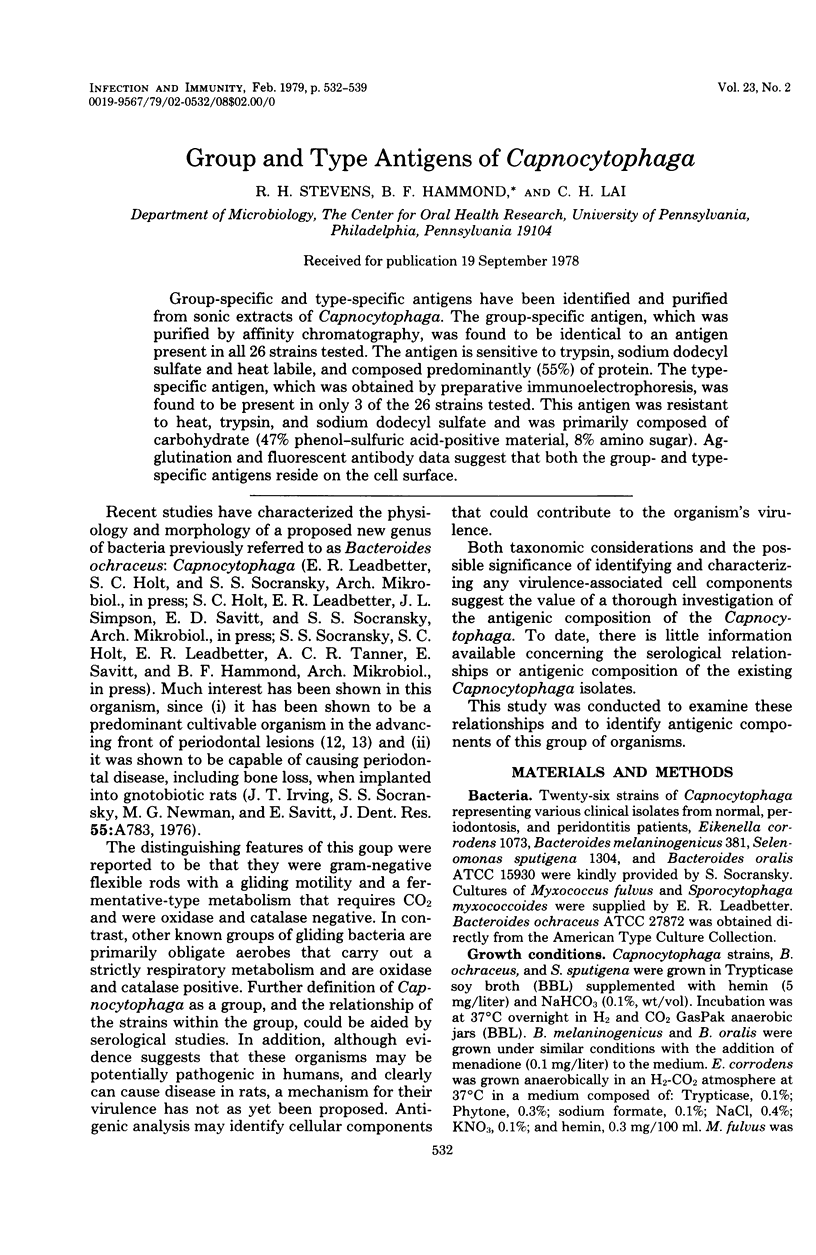
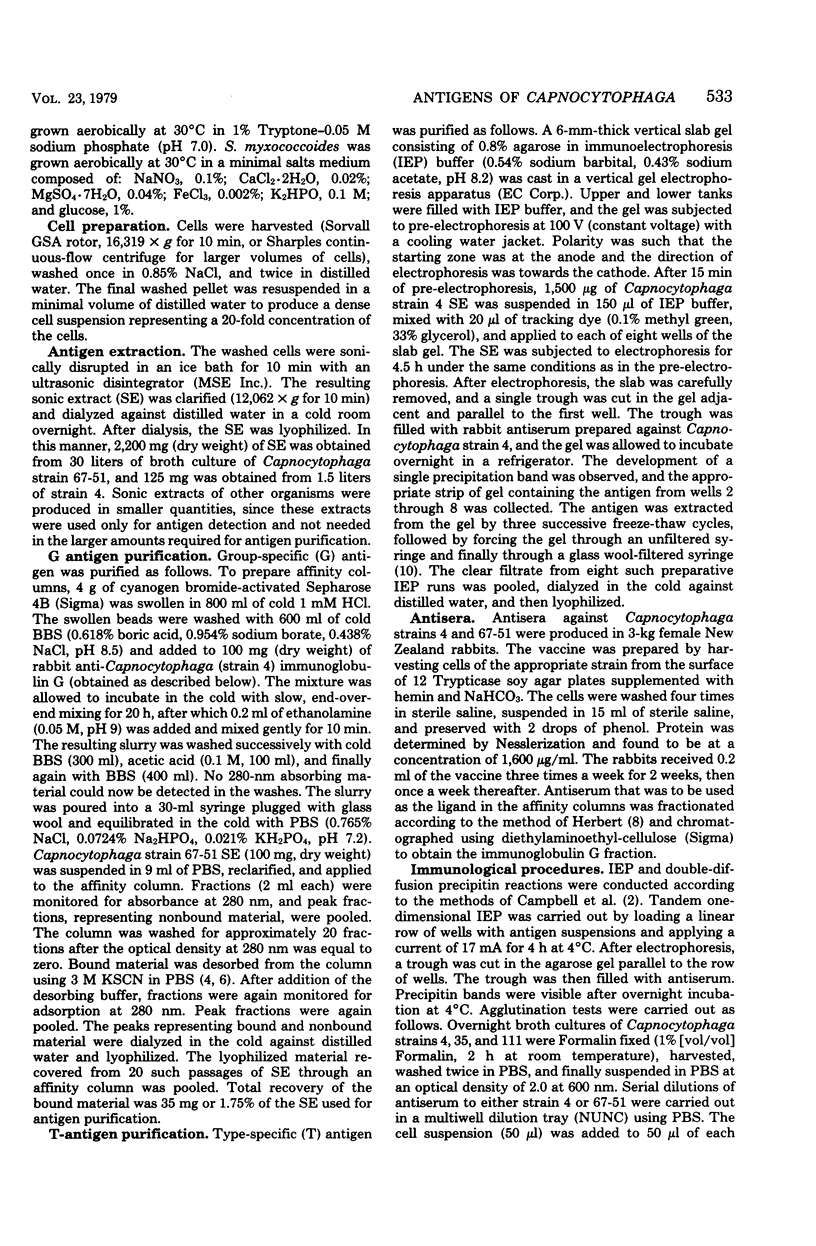
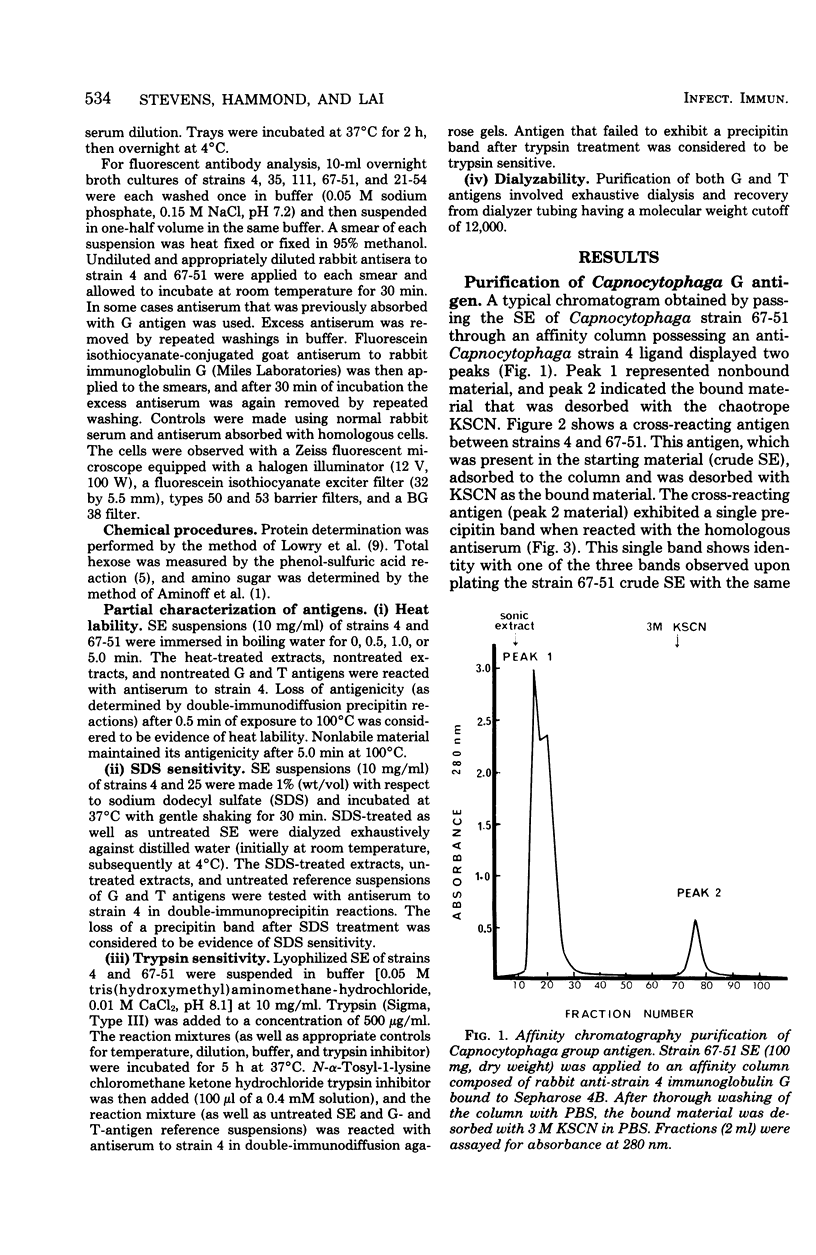
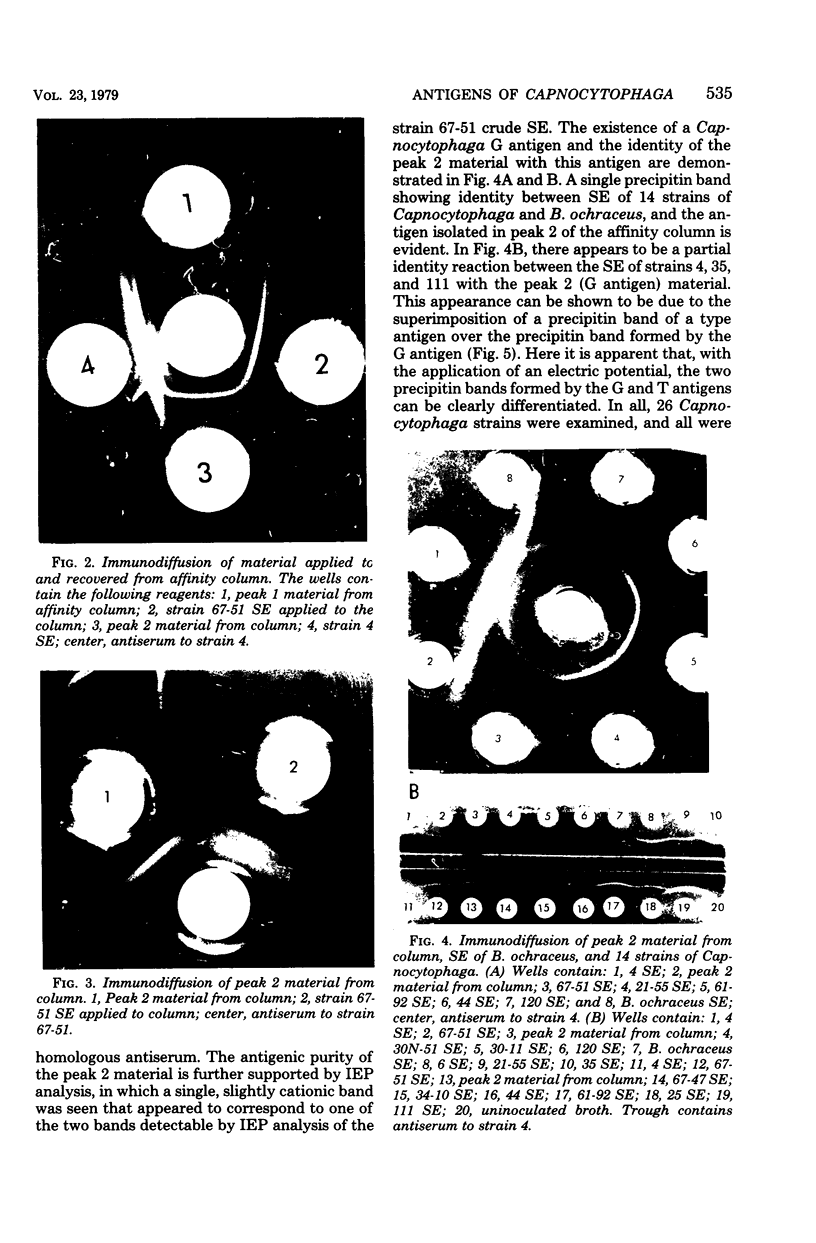
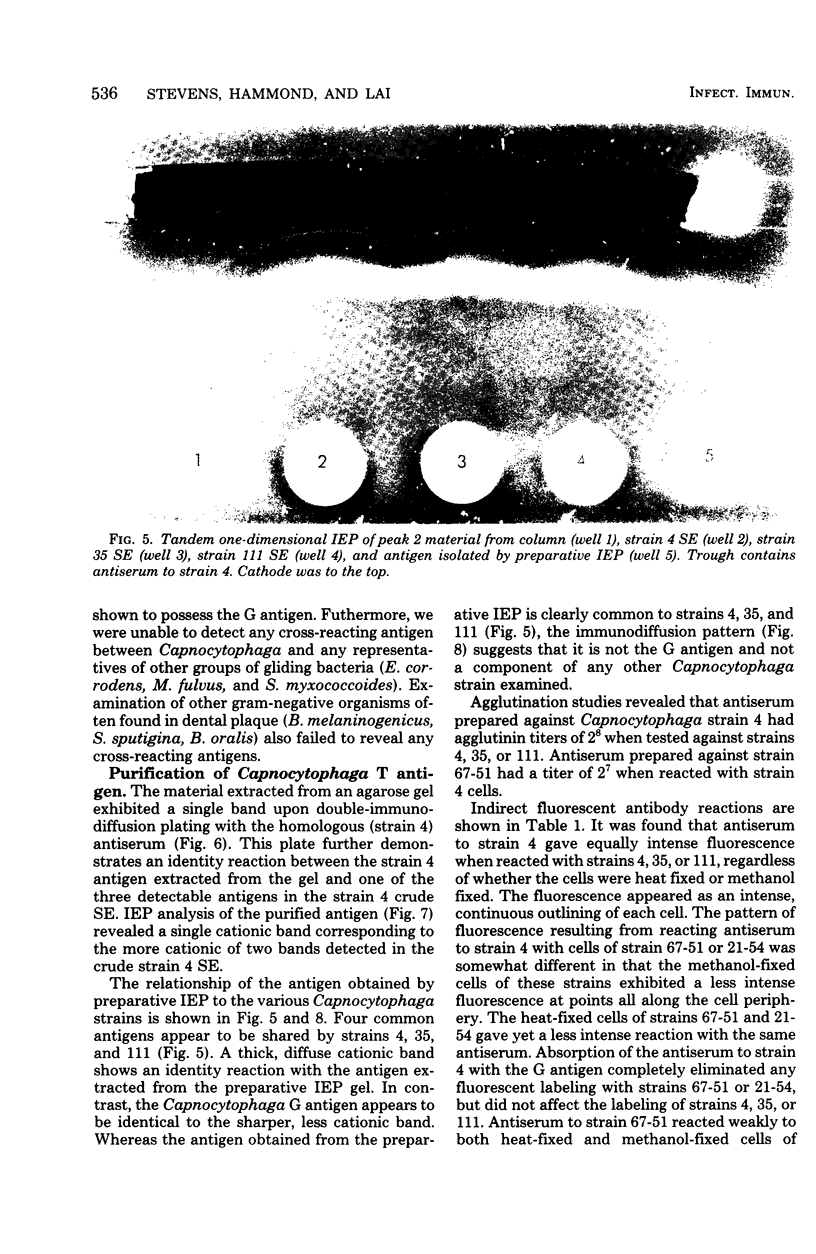

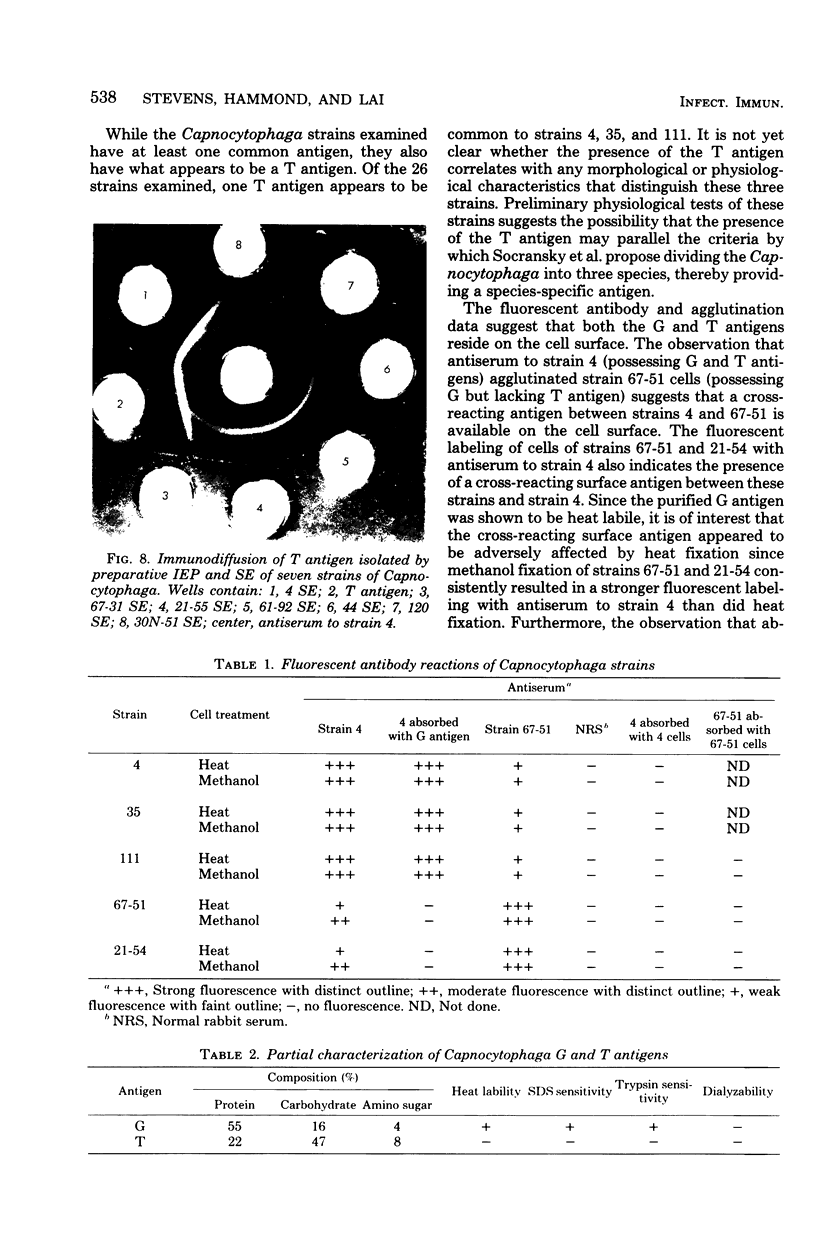
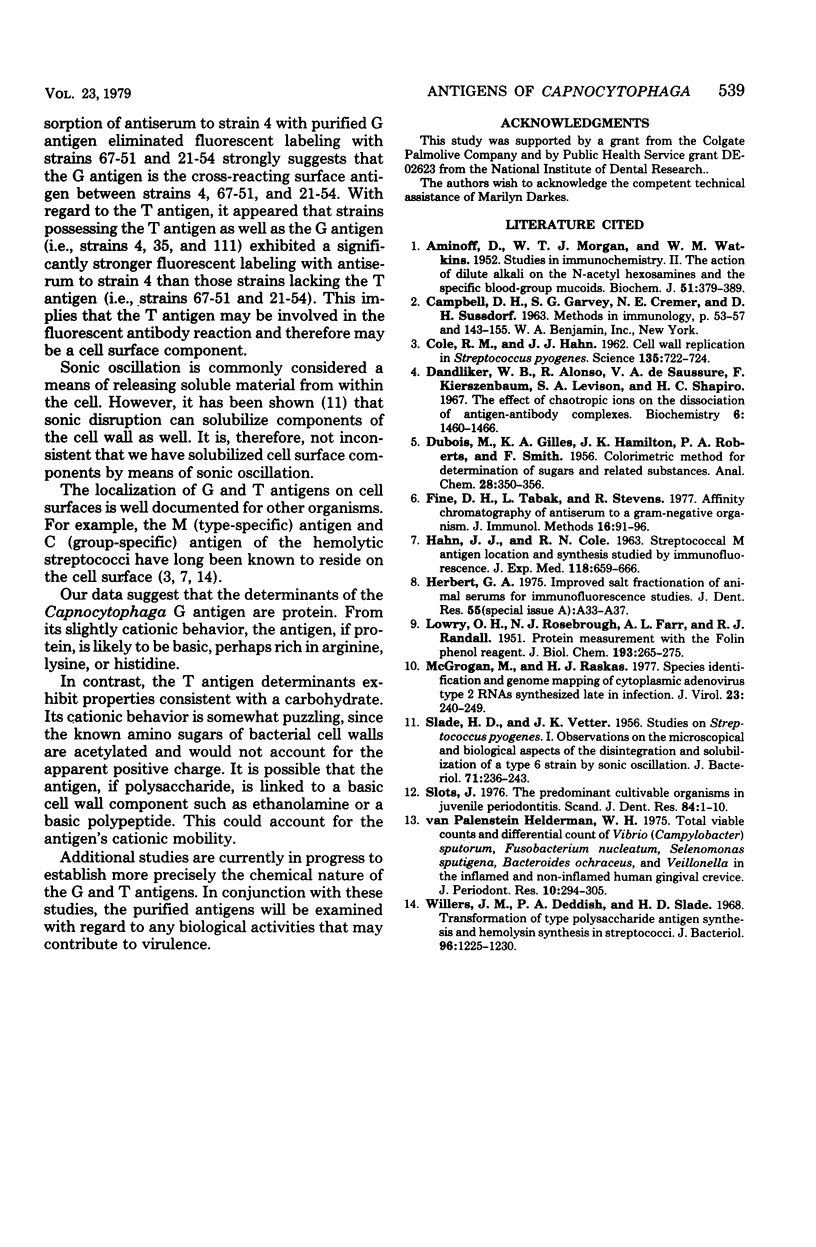
Images in this article
Selected References
These references are in PubMed. This may not be the complete list of references from this article.
- AMINOFF D., MORGAN W. T. J., WATKINS W. M. Studies in immunochemistry. 11. The action of dilute alkali on the N-acetylhexosamines and the specific blood-group mucoids. Biochem J. 1952 Jun;51(3):379–389. doi: 10.1042/bj0510379. [DOI] [PMC free article] [PubMed] [Google Scholar]
- COLE R. M., HAHN J. J. Cell wall replication in Streptococcus pyogenes. Science. 1962 Mar 2;135(3505):722–724. doi: 10.1126/science.135.3505.722. [DOI] [PubMed] [Google Scholar]
- Dandliker W. B., Alonso R., de Saussure V. A., Kierszenbaum F., Levison S. A., Schapiro H. C. The effect of chaotropic ions on the dissociation of antigen-antibody complexes. Biochemistry. 1967 May;6(5):1460–1467. doi: 10.1021/bi00857a031. [DOI] [PubMed] [Google Scholar]
- Fine D. H., Tabak L., Stevens R. Affinity chromatography of antiserum to a gram negative organism. J Immunol Methods. 1977;16(1):91–96. doi: 10.1016/0022-1759(77)90041-2. [DOI] [PubMed] [Google Scholar]
- HAHN J. J., COLE R. M. STREPTOCOCCAL M ANTIGEN LOCATION AND SYNTHESIS, STUDIED BY IMMUNOFLUORESCENCE. J Exp Med. 1963 Nov 1;118:659–666. doi: 10.1084/jem.118.5.659. [DOI] [PMC free article] [PubMed] [Google Scholar]
- LOWRY O. H., ROSEBROUGH N. J., FARR A. L., RANDALL R. J. Protein measurement with the Folin phenol reagent. J Biol Chem. 1951 Nov;193(1):265–275. [PubMed] [Google Scholar]
- McGrogan M., Raskas H. J. Species identification and genome mapping of cytoplasmic adenovirus type 2 RNAs synthesized late in infection. J Virol. 1977 Aug;23(2):240–249. doi: 10.1128/jvi.23.2.240-249.1977. [DOI] [PMC free article] [PubMed] [Google Scholar]
- SLADE H. D., VETTER J. K. Studies on Streptococcus pyogenes. I. Observations on the microscopical and biological aspects of the disintegration and solubilization of a type 6 strain by sonic oscillation. J Bacteriol. 1956 Feb;71(2):236–243. doi: 10.1128/jb.71.2.236-243.1956. [DOI] [PMC free article] [PubMed] [Google Scholar]
- Slots J. The predominant cultivable organisms in juvenile periodontitis. Scand J Dent Res. 1976 Jan;84(1):1–10. doi: 10.1111/j.1600-0722.1976.tb00454.x. [DOI] [PubMed] [Google Scholar]
- Willers J. M., Deddish P. A., Slade H. D. Transformation of type polysaccharide antigen synthesis and hemolysin synthesis in streptococci. J Bacteriol. 1968 Oct;96(4):1225–1230. doi: 10.1128/jb.96.4.1225-1230.1968. [DOI] [PMC free article] [PubMed] [Google Scholar]
- van Palenstein Helderman W. H. Total viable count and differential count of vibrio (campylobacter) sputorum, fusobacterium nucleatum, selenomonas sputigena, bacteroides ochraceus and veillonella in the inflamed and non inflamed human gingival crevice. J Periodontal Res. 1975 Nov;10(5):294–305. doi: 10.1111/j.1600-0765.1975.tb00037.x. [DOI] [PubMed] [Google Scholar]



